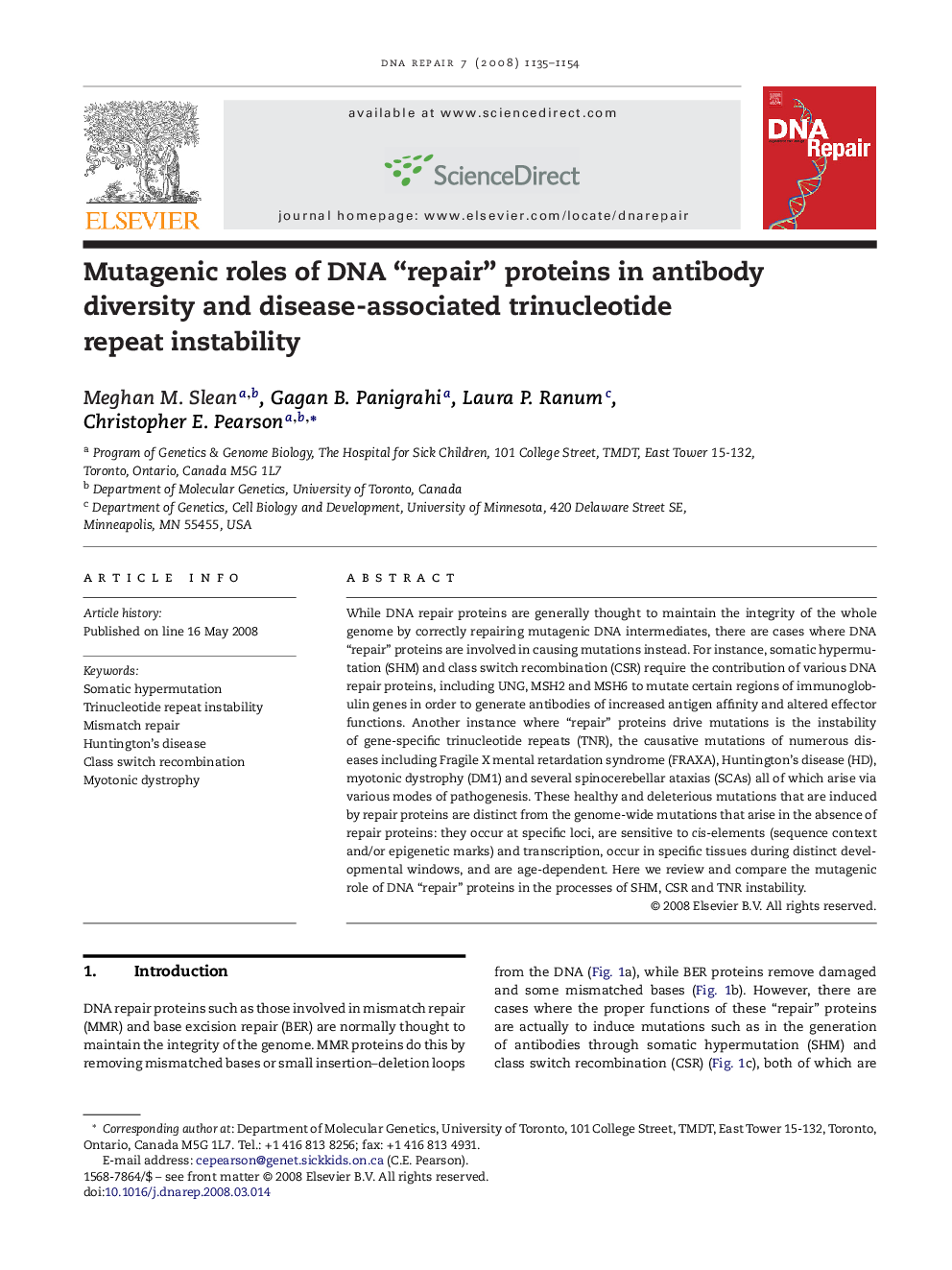| کد مقاله | کد نشریه | سال انتشار | مقاله انگلیسی | نسخه تمام متن |
|---|---|---|---|---|
| 1980823 | 1061883 | 2008 | 20 صفحه PDF | دانلود رایگان |

While DNA repair proteins are generally thought to maintain the integrity of the whole genome by correctly repairing mutagenic DNA intermediates, there are cases where DNA “repair” proteins are involved in causing mutations instead. For instance, somatic hypermutation (SHM) and class switch recombination (CSR) require the contribution of various DNA repair proteins, including UNG, MSH2 and MSH6 to mutate certain regions of immunoglobulin genes in order to generate antibodies of increased antigen affinity and altered effector functions. Another instance where “repair” proteins drive mutations is the instability of gene-specific trinucleotide repeats (TNR), the causative mutations of numerous diseases including Fragile X mental retardation syndrome (FRAXA), Huntington's disease (HD), myotonic dystrophy (DM1) and several spinocerebellar ataxias (SCAs) all of which arise via various modes of pathogenesis. These healthy and deleterious mutations that are induced by repair proteins are distinct from the genome-wide mutations that arise in the absence of repair proteins: they occur at specific loci, are sensitive to cis-elements (sequence context and/or epigenetic marks) and transcription, occur in specific tissues during distinct developmental windows, and are age-dependent. Here we review and compare the mutagenic role of DNA “repair” proteins in the processes of SHM, CSR and TNR instability.
Journal: DNA Repair - Volume 7, Issue 7, 1 July 2008, Pages 1135–1154